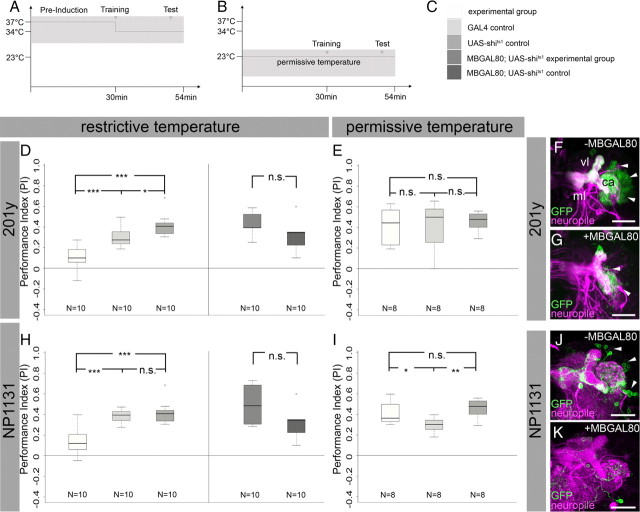Figure 3.
Appetitive olfactory learning is impaired by blocking synaptic output of embryonic-born Kenyon cells. Studying appetitive olfactory learning in 201y/UAS-shits1 and NP1131/UAS-shits1 larvae at restrictive temperature (A) revealed a significantly impaired performance (left panel in D, H; p < 0.05). Such memory impairment was absent when larvae were trained and tested at permissive temperature (B, E, I; p > 0.05) or when introducing MBGAL80 at restrictive temperature (right panel in D, H; p > 0.05) that inhibits GAL4 activity in KCs partially for 201y (compare F and G) or completely for NP1131 (compare J and K). The different patterns of the box plots in D–I are explained in C. Box plots represent an N of 8 or 10 for each genotype. The whole experiment (of 54 min, including an initial heat shock) was performed at restrictive temperature as indicated by the shaded field. Medians are shown as crosslines, 50% of the values of a given genotype being located within the box; whiskers represent the entire set of data. For comparison between genotypes, Wilcoxon rank sum test was used. F–K each shows a frontal view onto a representative projection of z-stacks of a brain hemisphere of the given genotype. vl, Vertical lobe; ml, medial lobe; ca, calyx; mushroom body Kenyon cell bodies are highlighted by arrowheads. Scale bars, 25 μm. See also supplemental Tables S1 and S2 (available at www.jneurosci.org as supplemental material) for anatomical details and sensory acuity tests.

